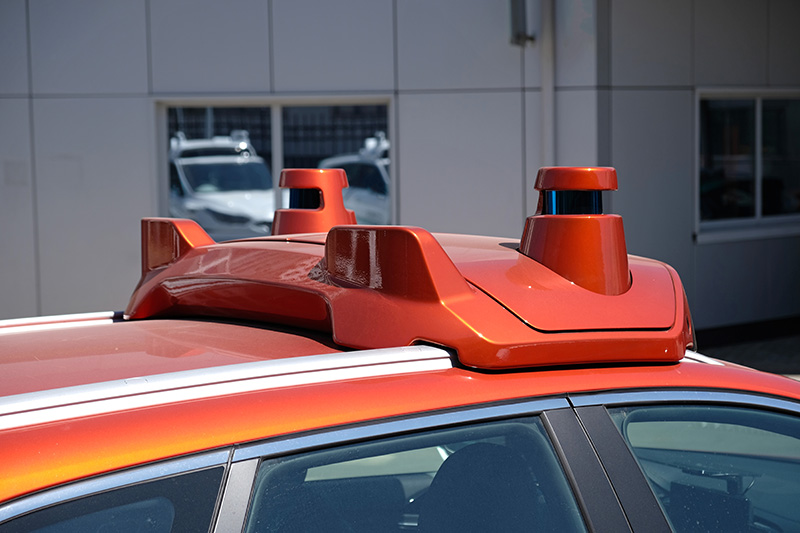In the dark – reflective paint helps autonomous vehicles see more clearly
A highly reflective black paint could enable self-driving cars to detect objects in the dark using only light detection and ranging (LiDAR).

While light detection and ranging (LiDAR) can map a 3D environment by sensing any reflected near-infrared (NIR) light, it is often paired with other sensors to detect objects.
The nanoparticle (NP) paint is a collaboration between the Korean universities of Hanbat National, Chungnam National and Hanseo, and the University of Texas at St Austin, USA.
Dr Chang-Min Yoon at Hanbat National University reports that it has an NIR reflectance of 40.9R% at 905nm.
To make the paint, the team mixes titanium tetrachloride or titanium isopropoxide with water to form a thin layer of titanium dioxide (TiO2) on small fragments of silica using a sol-gel method.
One paint has black core-shell nanoparticles (BCS-NPs) – which retain the silica – one with black single-shell hollow nanoparticles (BSS-HNPs), and another with black double-shell hollow nanoparticles (BDS-HNPs).
The BSS-HNPs paint is reported to show improved NIR reflectance because of the NPs’ air/TiO2 interface, while the BDS-HNPs paint has the highest NIR reflectance as it has the most air/TiO2 interfaces. They have also made the inner shell of the BDS-HNPs white to better reflect NIR light.
Yoon says they chose TiO2 as it has good adhesion, and the shape and morphology can easily be tuned. It is also hydrophilic and can be turned darker by reduction.
'I thought by manipulating the morphology of TiO2 similar to eggplant, which has black outer colour and white inner colour, NIR could be reflected in the phase of material (TiO2/glass template or TiO2/air) according to the Fresnel’s principle.'
Etching the glass with hydrofluoric acid leaves a hollow layer of white, highly reflective TiO2, which is reduced with sodium borohydride (NaBH4) to make a black material with reflective qualities.
The team has mixed the NIR-reflective black materials, diluent and hydrophilic varnish in a mass ratio of 1:3:1 to make the paints. They then sprayed their paints onto various substrates, such as glass, acrylic and a model bus.
The team says BDS-HNPs has a NIR reflectance similar to commercially available, NIR-reflective, bilayer, dark-tone coatings. Objects painted with BDS-HNPs can be successfully recognised by three different LiDAR sensors up to 5m away – a robot sensor, a 360° rotating one and a MEMs mirror.
The paint is reported to have good chemical stability when exposed to acids, Yoon notes, but changes with chemical bases.
Blackness levels are also maintained in high heat and UV light, says the team, who have heated a sample to 300°C under atmospheric conditions, and have directed UV wavelengths of 254nm and 365nm to powder samples of BSS-HNPs and BDS-HNPs.
The team believes the paints are applicable for both cars and roads, as the detectable black materials can be synthesised as sphere or plate-type.
They are considering integrating the materials with fabrics as it has a cooling effect.







